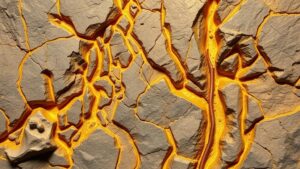How to Dowse for Meteorites and Other Rare Geological Objects
How to Dowse for Meteorites and Other Rare Geological Objects
Dowsing, an ancient practice often associated with finding water, has evolved to include the search for minerals, meteorites, and other geological treasures. This article provides a comprehensive guide on how to effectively dowse for meteorites, including techniques, tools, and practical applications of this fascinating method.
Understanding Dowsing
Dowsing relies on intuition, sensitivity to the environment, and the use of tools to locate hidden objects. Dowsers often utilize a variety of instruments, such as divining rods or pendulums, to help guide their search. While the scientific community remains skeptical about the efficacy of dowsing, anecdotal evidence and historical use suggest that many practitioners have found success.
Tools Needed for Dowsing
The right tools can make all the difference in a dowsing expedition. Common tools for dowsing include:
- Divining Rods: Typically made of materials such as wood or metal, rods are held loosely in the hands and can swing or move in response to underground objects.
- Pendulums: A weighted object suspended from a string, pendulums can provide directional movement that indicates the presence of a target.
- Metal Detectors: Although not traditional dowsing, metal detectors can complement the practice by providing electromagnetic signals aiding in locating metallic meteorites.
Techniques for Dowsing Meteorites
While there are various techniques for dowsing, the following steps are critical for locating meteorites:
- Preparation: Before beginning a dowsing session, practitioners should enter a focused and calm state, allowing them to connect with their environment.
- Choose the Right Location: Research areas with known meteorite falls or geological formations associated with meteorites. Regions with little human disturbance provide the best chances for success.
- Establish a Baseline: Walk the area without using your dowsing tools to familiarize yourself with the landscape and any natural disturbances.
- Begin Dowsing: Hold your chosen tool gently and keep your mind open. Move slowly and methodically across the area, watching for any movement in your tools.
Identifying Meteorites
Not all metallic objects detected will be meteorites. To differentiate potential finds, consider the following characteristics of meteorites:
- Density: Meteorites tend to be denser than terrestrial rocks, often exhibiting a metallic luster.
- Surface Features: Look for fusion crust, a smooth, dark coating formed as the meteorite passes through the Earths atmosphere.
- Magnetism: Many meteorites contain iron and are magnetic, allowing for easy identification using a small magnet.
Case Studies and Examples
One of the most notable examples of successful dowsing for meteorites occurred in the 2011 Sutters Mill meteorite shower in California. Local amateur dowsers reported using pendulums to locate fragments across a wide area, leading to the discovery of several specimens, which provided valuable insights into the solar systems history.
Also, the Nininger Meteorite Museum has documented instances of professional dowsers successfully locating rare meteorites using traditional dowsing techniques, showcasing the potential of this practice when applied thoughtfully.
Addressing Skepticism and Queries
Many skeptics argue that dowsing lacks scientific validation. It is crucial to approach this practice with open-mindedness while also maintaining a critical perspective. Consider the following:
- Document Your Findings: Keep a log of your dowsing sessions, noting locations, environmental conditions, and the results of your searches.
- Seek Community Input: Engage with local mineral clubs or online forums to share experiences and gather informed opinions on your findings.
Conclusion
Dowsing for meteorites and rare geological objects is an intriguing endeavor that melds intuition with exploration. While not universally accepted as a reliable method, many enthusiasts have found the practice rewarding, leading to significant discoveries. For those interested in blending adventure with the pursuit of knowledge, dowsing presents an engaging way to connect with the Earths natural wonders.
Actionable Takeaway: If you are intrigued by the prospect of dowsing for meteorites, start small–purchase basic dowsing tools, choose a local site known for meteorite activity, and document your journey. Whether or not your efforts yield visible results, the experience can deepen your appreciation for geology and the mysteries of the cosmos.



